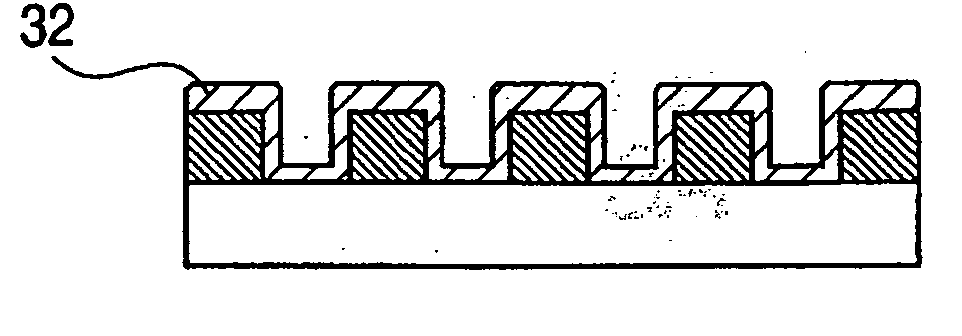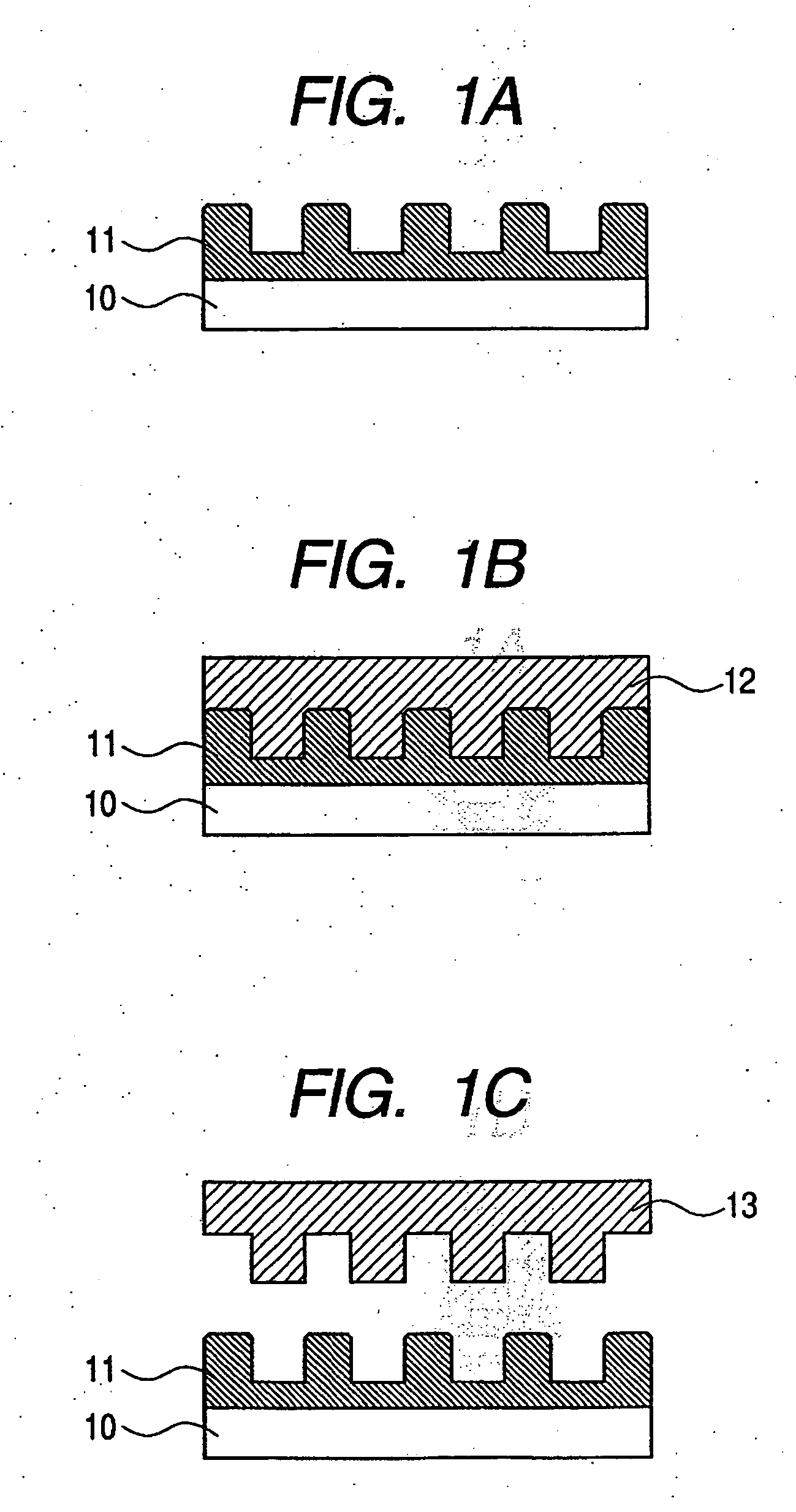Mold and process of production thereof
- Summary
- Abstract
- Description
- Claims
- Application Information
AI Technical Summary
Benefits of technology
Problems solved by technology
Method used
Image
Examples
example 1
[0056] In this Example, a mold is prepared from a NiTi alloy by use of a resist pattern according to the present invention.
[0057] Firstly, by use of a mask formed by electron beam exposure, a 5-mm square mater mold was prepared which has projections of Si in a circular truncated cone shape of about 80 nm high arranged at intervals of 100 nm in a triangular lattice.
[0058] Next, on another Si substrate, an electron beam resist was applied in a thickness of about 50 nm by spin coating. With this resist-coated substrate kept heated at 120° C., the above master mold was pressed against the resist layer at a pressure of 1 ton / cm2.
[0059] After the substrate was cooled, the master mold was separated from the resist layer. The surface of the resist layer was examined by AFM (atomic force microscopy), and found that the projections of the master mold had been transferred as depressions onto the resist layer with the depression depth of about 40 nm and the depression diameter of about 60 nm...
example 2
[0068] In this Example, nano-imprinting was conducted with the NiTi mold prepared in Example 1. In particular, with a nano-imprint employing the NiTi mold, aluminum was anodized to prepare highly regular porous film.
[0069]FIGS. 2A, 2B, 2C, 2D, 2E and 2F are drawings for explaining the nano-imprinting process employing the NiTi mold in this Example.
[0070] The nano-imprinting process with the NiTi mold in this Example is explained by reference to FIGS. 2A, 2B, 2C, 2D, 2E and 2F.
[0071] Firstly, on Si substrate 20, Al layer 21 is formed in a thickness of 50 nm by sputtering, and thereon, electron beam resist layer 22 was applied in a thickness of 50 nm by spin coating (FIG. 2A).
[0072] Secondly, with the substrate kept heated at 120° C., the NiTi mold 23 prepared in Example 1 was pressed against resist layer 22 at a pressure of 1 ton / cm2 (FIG. 2B).
[0073] After cooling the substrate, NiTi mold 23 was separated and removed (FIG. 2C).
[0074] The surface of separated resist layer 22 was...
PUM
| Property | Measurement | Unit |
|---|---|---|
| Thickness | aaaaa | aaaaa |
| Ratio | aaaaa | aaaaa |
| Shape | aaaaa | aaaaa |
Abstract
Description
Claims
Application Information
 Login to View More
Login to View More - R&D
- Intellectual Property
- Life Sciences
- Materials
- Tech Scout
- Unparalleled Data Quality
- Higher Quality Content
- 60% Fewer Hallucinations
Browse by: Latest US Patents, China's latest patents, Technical Efficacy Thesaurus, Application Domain, Technology Topic, Popular Technical Reports.
© 2025 PatSnap. All rights reserved.Legal|Privacy policy|Modern Slavery Act Transparency Statement|Sitemap|About US| Contact US: help@patsnap.com



